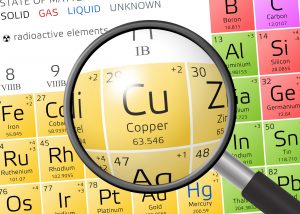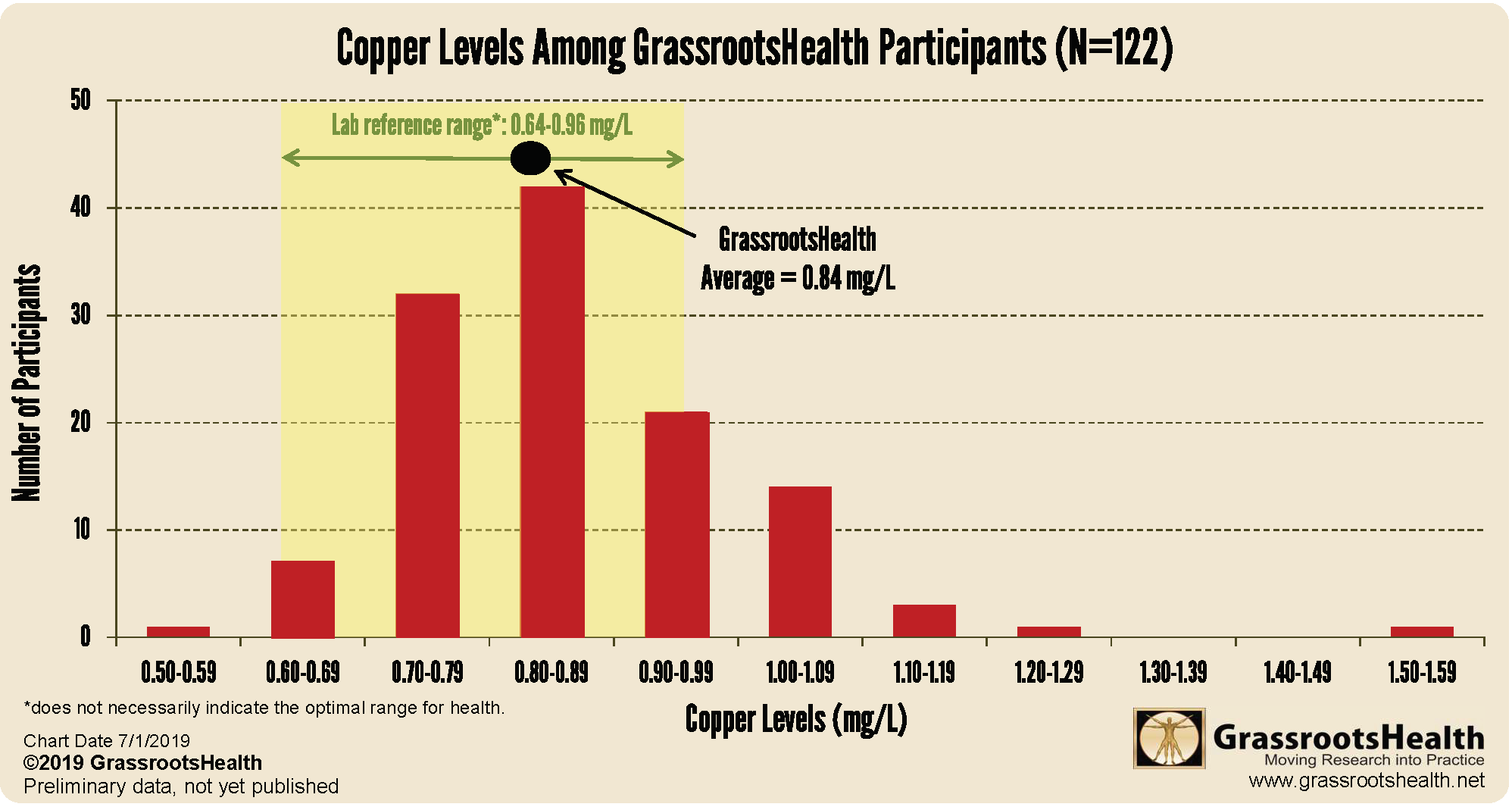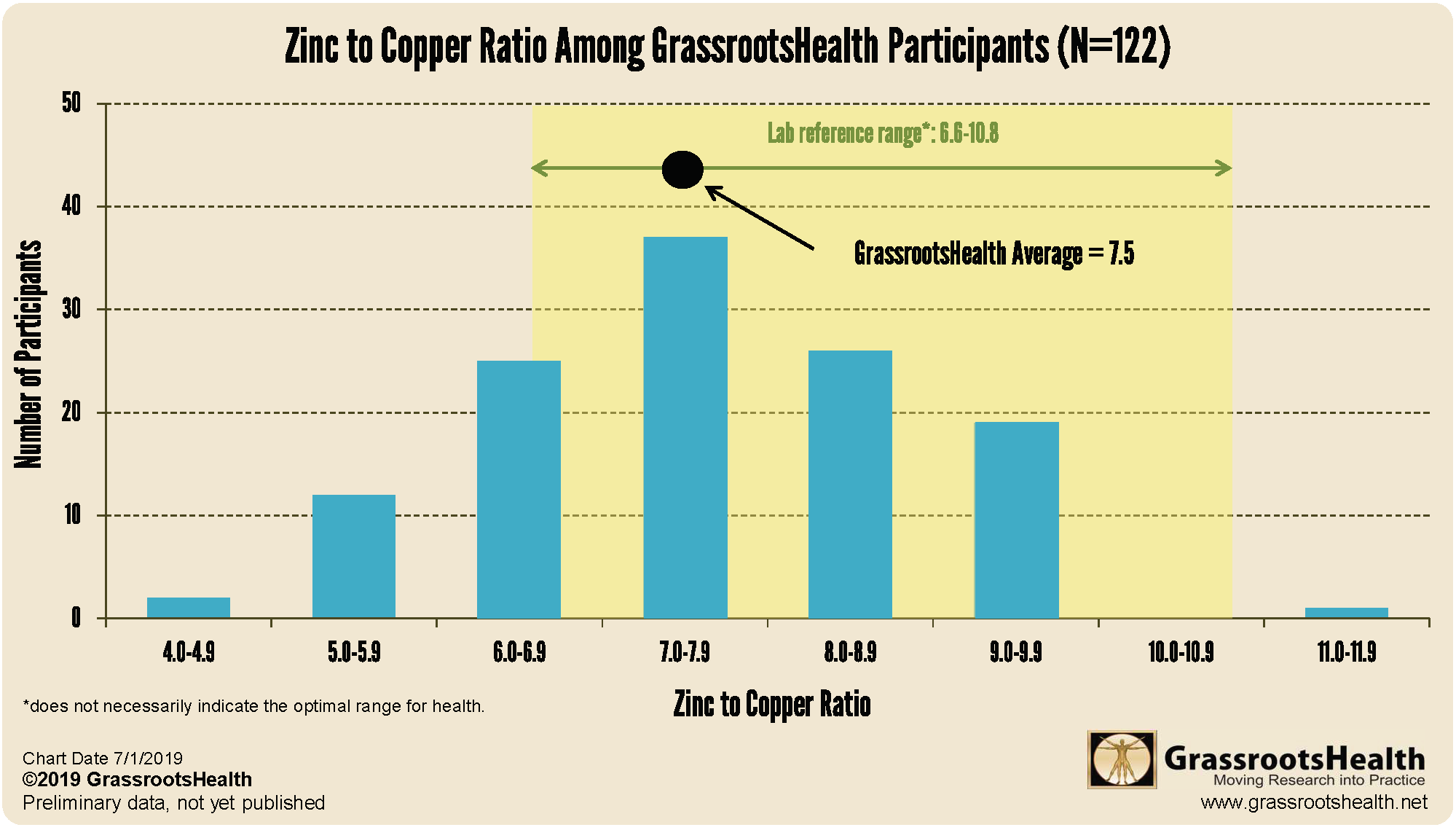Published on July 5, 2019
 Copper is an essential enzyme co-factor that helps keep bones, skin, nerves, and the immune system healthy and working properly. Copper is essential for the formation of collagen, a main component of connective tissue, and is also necessary for iron absorption, conversion to its usable form, and transport around the body.
Copper is an essential enzyme co-factor that helps keep bones, skin, nerves, and the immune system healthy and working properly. Copper is essential for the formation of collagen, a main component of connective tissue, and is also necessary for iron absorption, conversion to its usable form, and transport around the body.
Copper is a mineral present naturally in a wide variety of foods, including shellfish, liver, beans, nuts, whole grains, potatoes, dark leafy greens, dried fruits, black pepper, yeast, and cocoa. More information about copper can be found in this previous blog.
Earlier this year, GrassrootsHealth started offering a copper test as part of the Elements Panel, which includes testing your vitamin D level along with essential elements magnesium, selenium, zinc, copper, and zinc:copper ratio, and toxic heavy metals cadmium, lead, and mercury. This test measures the amount of copper within the red blood cells as well as within the serum, and for this reason, can be more accurate than a typical copper test of the serum alone.
The test results for the first 122 participants who have tested their copper levels are shown below. The average level was 0.84 mg/L which falls within the lab reference range (0.64-0.96 mg/L); this reference range indicates the range of typical results found in the population the lab serves but does not necessarily indicate the optimal range for health.
Additionally, this blood spot test provides the ratio of zinc to copper (Zn:Cu). One of the most common trace metal imbalances is high copper and low zinc so it is important to know the ratio between these two essential elements. Some evidence suggests that this imbalance could contribute to a number of health conditions such as headaches, muscle and joint pain, hyperactivity, premenstrual syndrome, and depression. Also, taking a high level of supplemental zinc may decrease copper absorption and lead to deficiency. Among GrassrootsHealth participants, the average level was 7.5 mg/L which falls within the lab reference range (6.6-10.8 mg/L).
The optimal range for copper levels and the zinc to copper ratio is not known. Excess copper can cause nausea, vomiting, abdominal cramps, headaches, and diarrhea so it’s important to identify this optimal range. At this point, we have not assessed the correlation between your tested copper levels or zinc to copper ratio and other nutrient levels or health outcomes. Your ongoing participation in this project will contribute greatly to knowing what levels are optimal for health. We will continue to track this data and report any results back to you. We need 1,000 participants to have enough data to assess key outcomes. Keep up the good work!
If you would like to help sponsor others’ participation, let us know by email jen @grassrootshealth.org!
How do I know if my copper levels are supportive of good health?
Make sure you and your loved ones know your levels of essential nutrients! Testing vitamin D levels and taking daily steps to keep it at a target level of 40-60 ng/ml (100-150 nmol/L) is also important. Find out your levels today! Log on to the shop (click the link below) to get your tests and see for yourself if your levels can be improved.
Make sure you track your results before and after, about every 6 months!
Click Here to Access the Shop Page
How can I track my copper levels and zinc to copper ratio?
To help you track your nutrient levels, GrassrootsHealth has created an online tracking system called myData-myAnswers. You can also track your copper and zinc intake from supplements and dietary sources. Check it out today!








